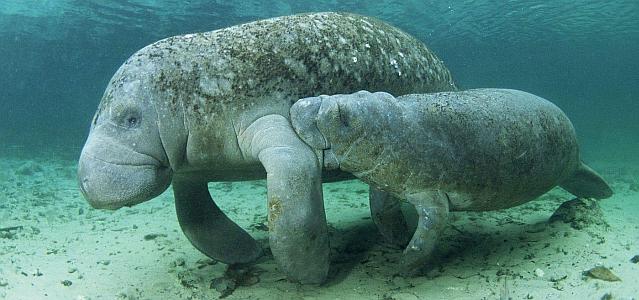 In December we posted about an emergency feeding program for starving Florida manatees to help them survive the winter. The sea grass that manatees rely on for food has been decimated by pollution, killed off by algae blooms fueled largely by human waste and fertilizer runoff from lawns and farms. As more people moved to the region and wastewater infrastructure aged, more toxins leaked into the waterways.
In December we posted about an emergency feeding program for starving Florida manatees to help them survive the winter. The sea grass that manatees rely on for food has been decimated by pollution, killed off by algae blooms fueled largely by human waste and fertilizer runoff from lawns and farms. As more people moved to the region and wastewater infrastructure aged, more toxins leaked into the waterways.
Over the winter, state and federal wildlife officials fed manatees in the Indian River Lagoon ten tons of romaine lettuce to supplement their dwindling food supply.
The New York Times reports that the feeding experiment, funded by $116,000 in public donations, was a gamble. Between Jan. 1 and April 1, the number of confirmed deaths fell to 479, down from 612 in 2021. In 2020, that figure was 205.
In all of last year, 1,100 Florida manatees died, a record. About 7,500 are thought to remain in the wild.
This year’s dip in deaths does not necessarily mean that starvation has eased and feeding has helped. Scientists will spend the summer reviewing environmental conditions, necropsy results and other data to make a more complete assessment, said Dr. Martine de Wit, a veterinarian with the Florida Fish and Wildlife Conservation Commission at its Marine Mammal Pathobiology Lab in St. Petersburg.
“It likely had to do with a later start to winter,” she said of the lower preliminary death toll. “And then we had a relatively short winter. So that may have helped some manatees.”
Everyone agrees on the ideal long-term solution: restoring the lagoon habitat through a variety of efforts, from growing and planting new sea grass beds to improving storm water drainage to moving properties on septic tanks to sewer systems. But all of those projects are expensive and will take years. To critics, the feeding program was woefully insufficient — too late and far too limited, both in the amount and type of food provided to the animals.
